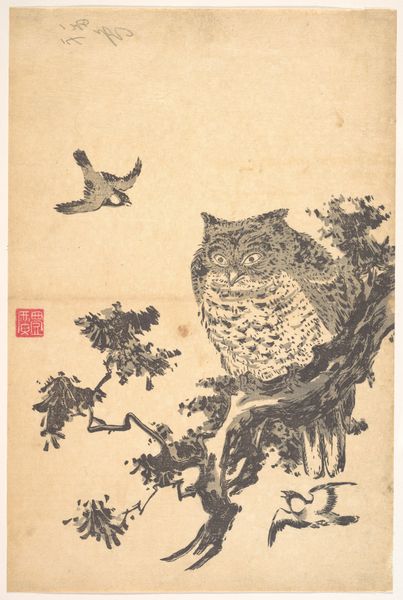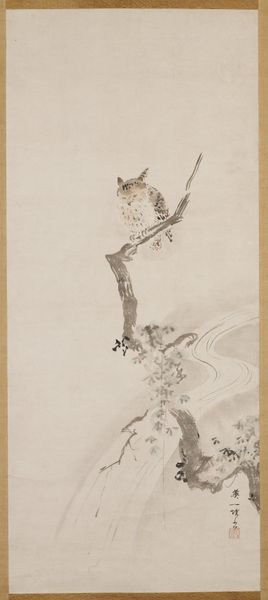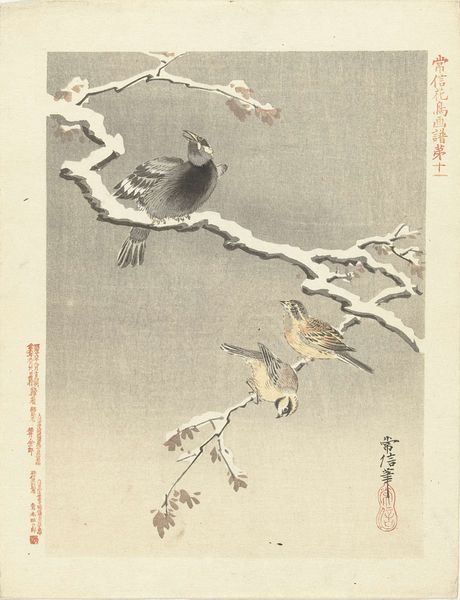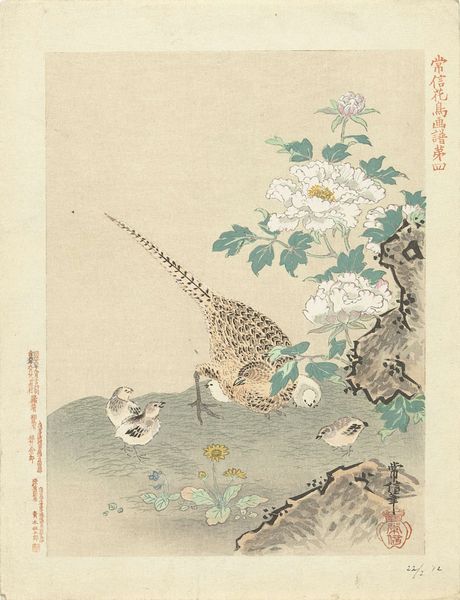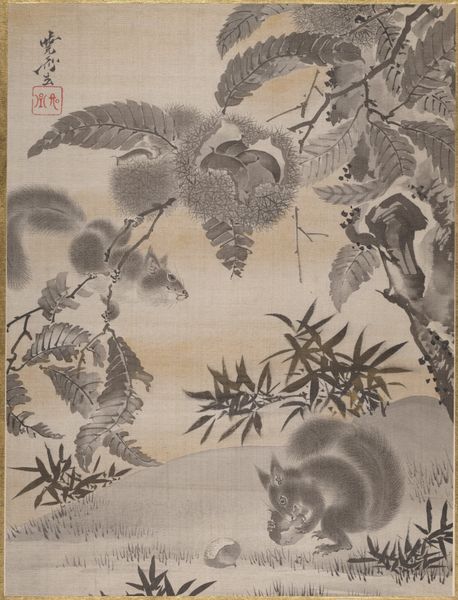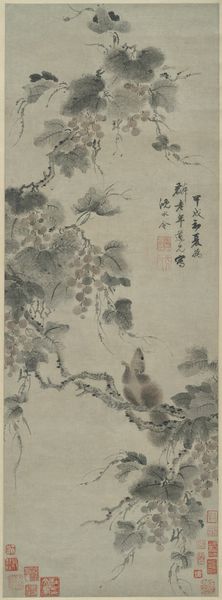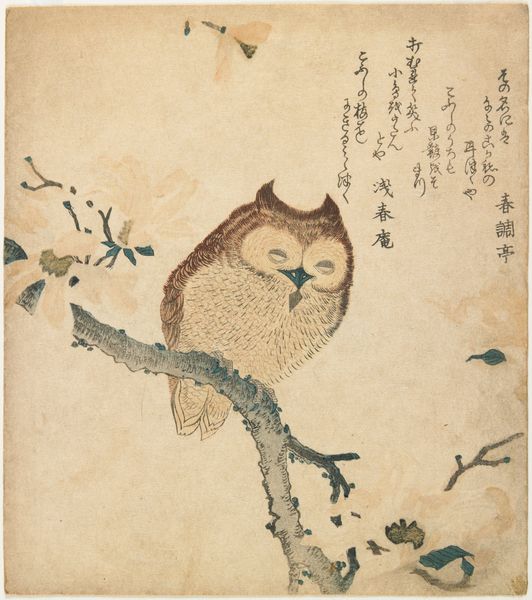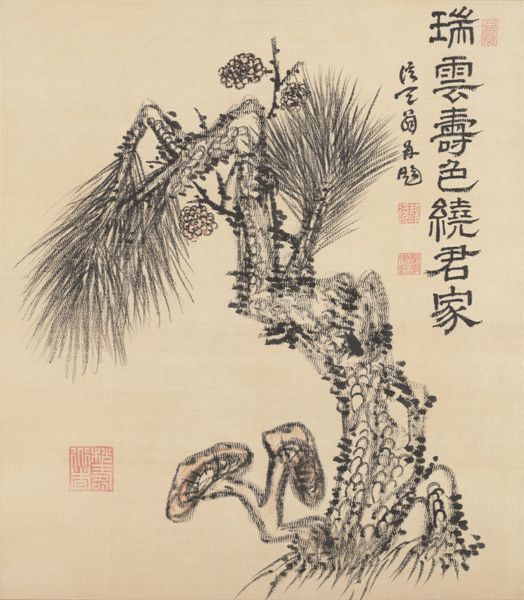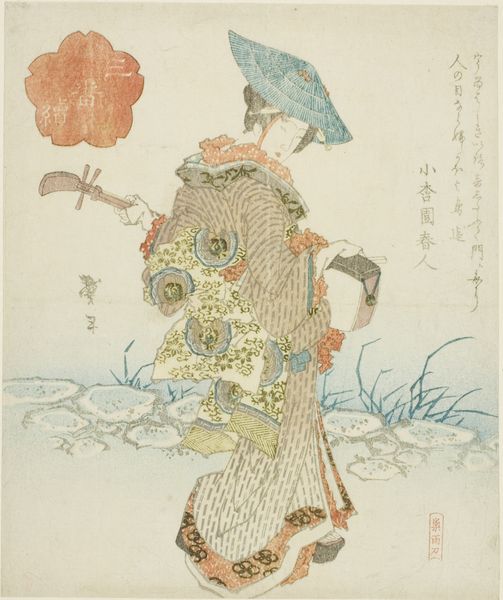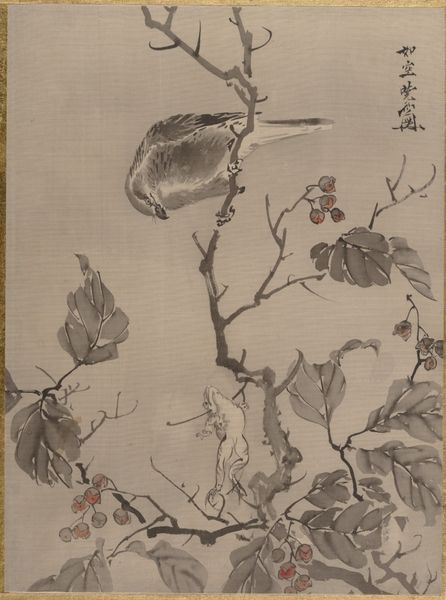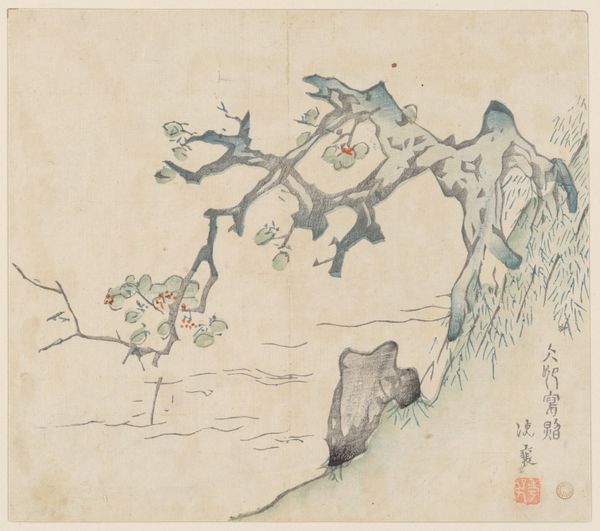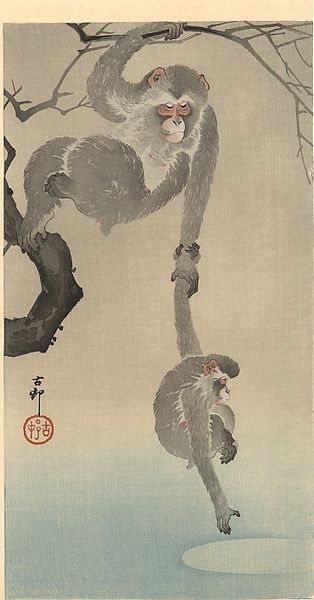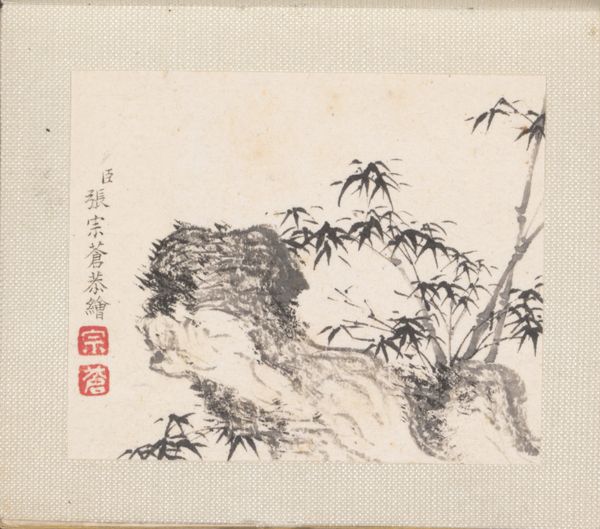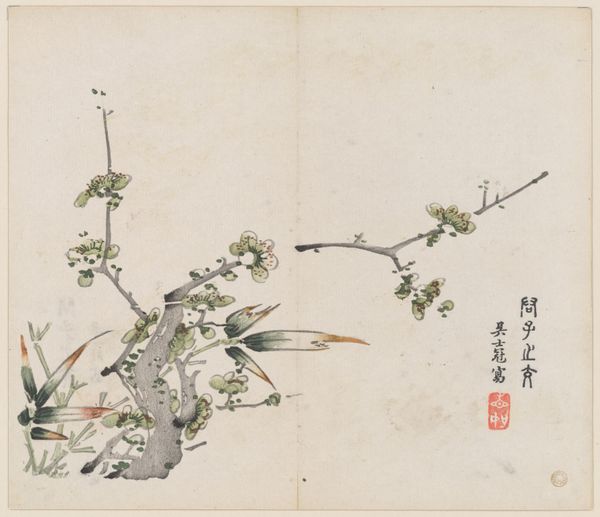
Dimensions: height 271 mm, width 209 mm
Copyright: Rijks Museum: Open Domain
Kano Tsunenobu created this painting of an owl on a branch in Japan during the Edo period. It's painted with ink and color on paper. During this time, the Kano school of painting was the dominant artistic style, patronized by the ruling shogunate. Let's consider the social context of this image. The Kano school emphasized formal training and adherence to established conventions. Tsunenobu himself headed the school from 1682. Therefore, this artwork, depicting a serene and naturalistic scene, reflects the values of stability, order, and tradition upheld by the shogunate. At the time, owls were also seen as symbols of good luck and protection against famine. So, it could be seen as a benevolent omen for the ruling classes. Understanding the institutional history of the Kano school and the cultural symbolism of owls helps us interpret this image within its specific time and place. By consulting historical records and studying the artistic conventions of the Edo period, we can gain a deeper appreciation. We can learn about the social and political forces that shaped the creation and reception of this artwork.
Comments
No comments
Be the first to comment and join the conversation on the ultimate creative platform.
